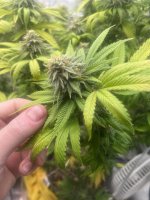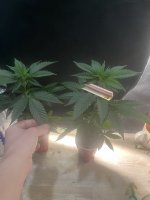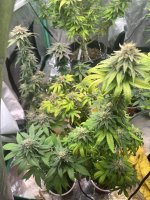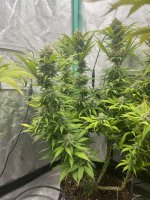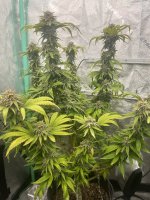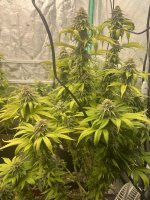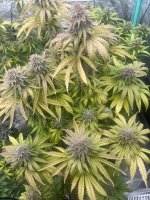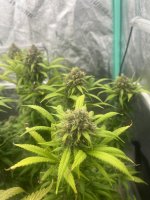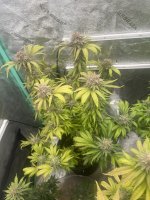Small update. I’ve been steadily increasing the goat milk ferment concentration in the spray. Right now I’m at 50ml/L of water. I think I’ll keep it here. This makes a suspensions that looks like chalky water.
On the plant side I also noticed some interesting observations. That weird barnyard smell is gone. The Thousand Oaks lady upfront has a sort of peppery smell to the un disturbed flower. Earlier on she had that sort of generic weed smell. I don’t know if this has anything to do with the spray, or rather the natural lifecycle of the plant. The tri chrome development looks good to me, and senescence is starting to show up in the fan leaves. All good to me so far!
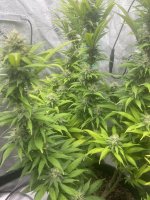
GH cheese
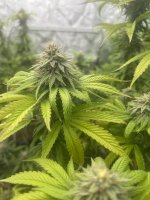
TO pheno 1
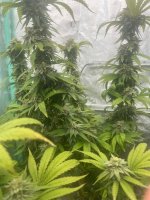
TO pheno 2
On the plant side I also noticed some interesting observations. That weird barnyard smell is gone. The Thousand Oaks lady upfront has a sort of peppery smell to the un disturbed flower. Earlier on she had that sort of generic weed smell. I don’t know if this has anything to do with the spray, or rather the natural lifecycle of the plant. The tri chrome development looks good to me, and senescence is starting to show up in the fan leaves. All good to me so far!

GH cheese

TO pheno 1

TO pheno 2

